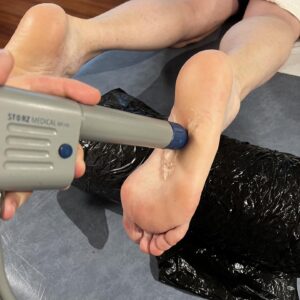Comprehensive Guide to Understanding Shoulder Tendonitis: Identifying Causes, Symptoms, and Proven Treatment Methods
Shoulder tendonitis stands as a prevalent yet often misunderstood ailment that can severely impair the daily routines of countless individuals. This painful condition stems from the inflammation of the tendons encircling the shoulder joint, which is frequently instigated by overuse or certain types of injuries. The resultant inflammation does not merely cause discomfort; it also induces stiffness and limits the range of motion in the shoulder, making even simple actions, such as reaching for a glass or picking up an object, incredibly difficult. For individuals whose jobs or athletic pursuits necessitate extensive use of their shoulders, grasping the intricacies of shoulder tendonitis is essential, as it significantly affects their overall quality of life and their ability to engage in daily activities without experiencing pain.
As we delve deeper into the multifaceted nature of shoulder tendonitis, it becomes increasingly important to acknowledge its widespread prevalence and the various demographics it impacts, which span a wide array of age groups and lifestyles. The shoulder joint’s remarkable flexibility allows for a diverse range of activities, yet this same mobility renders it susceptible to injuries. The rotator cuff, a vital group of muscles and tendons, plays an indispensable role in stabilizing the shoulder while facilitating smooth arm movements. When the tendons within this area become irritated or inflamed, the result can be a debilitating case of shoulder tendonitis. This scenario underscores the importance of early recognition and effective management strategies to mitigate its detrimental effects on daily living.
Key Facts and Insights About Shoulder Tendonitis You Should Be Aware Of
- Shoulder tendonitis is defined by the inflammation of shoulder tendons, which results in pain and limited movement.
- Common contributing factors include repetitive overhead motions, overuse, and poor posture, all of which can lead to chronic symptoms.
- Primary symptoms consist of ongoing pain, stiffness, and weakness in the shoulder area, significantly disrupting daily activities.
- Diagnosis generally involves a comprehensive physical examination, imaging tests, and occasionally shoulder arthroscopy for an exhaustive assessment.
- Non-surgical treatment alternatives, including rest, physical therapy, and anti-inflammatory medications, are often successful in managing shoulder tendonitis.
 Identifying the Contributing Factors of Shoulder Tendonitis to Enhance Prevention Strategies
Identifying the Contributing Factors of Shoulder Tendonitis to Enhance Prevention Strategies
Understanding the various factors that contribute to shoulder tendonitis is crucial for effective prevention. One major risk factor is the prevalence of repetitive overhead activities, which many athletes and workers frequently perform. For instance, sports like swimming, tennis, and baseball require extensive shoulder movements that can lead to gradual wear and tear on the tendons. Likewise, occupations that involve repetitive lifting or reaching overhead further heighten the risk of developing this painful condition.
As individuals engage in these activities, they may unknowingly accelerate the wear on their shoulder tendons, leading to inflammation and discomfort over time. Additionally, age-related degeneration plays a significant role; as we grow older, our tendons naturally lose elasticity and strength, making them more prone to injury. Lifestyle factors, such as poor posture and insufficient physical activity, can exacerbate these concerns. Furthermore, certain medical conditions, including diabetes and rheumatoid arthritis, can increase susceptibility to shoulder tendonitis. By recognizing these common risk factors, individuals can take proactive steps to protect their shoulder health and overall well-being.
Identifying the Main Symptoms of Shoulder Tendonitis for Prompt Intervention
The symptoms of shoulder tendinitis can greatly vary in intensity and may manifest differently from person to person. A primary symptom of this condition is persistent pain in the shoulder region, which often worsens with certain movements or activities. This discomfort may feel sharp or dull and can radiate down the arm or even into the neck, complicating daily tasks and diminishing overall comfort.
Individuals may find that their ability to perform everyday activities, such as reaching for objects or lifting items overhead, is severely hindered by their discomfort, impacting both their work and leisure activities. Stiffness in the shoulder joint, especially after periods of inactivity, is another common symptom. This stiffness can further restrict movement, leading to compensatory movements that may worsen the condition. Additionally, swelling around the shoulder joint is frequently observed alongside tendonitis. Recognizing these symptoms early is crucial for seeking timely medical intervention and preventing more serious complications from developing.
Advanced Diagnostic Techniques for Accurate Evaluation of Shoulder Tendonitis
| Diagnostic Test | Accuracy | Cost |
|---|---|---|
| MRI | High | High |
| Ultrasound | Moderate | Moderate |
| Physical Examination | Low | Low |
The diagnostic journey for shoulder tendonitis generally begins with a thorough medical history and a physical examination conducted by a qualified healthcare professional. During this assessment, patients will be asked to provide detailed information regarding their symptoms, including when they began and which specific activities might aggravate their discomfort. The physician will conduct a series of tests to evaluate the range of motion and strength of the shoulder joint, which are essential for determining whether tendonitis is the primary issue or if another underlying condition may be contributing to the symptoms.
In some cases, advanced imaging techniques, such as X-rays or MRI scans, may be required to confirm the diagnosis and rule out other potential issues like rotator cuff tears or arthritis. These imaging studies provide vital insights into the condition of the shoulder’s structures, facilitating informed treatment decisions. By understanding the diagnostic process for shoulder tendonitis, individuals can better appreciate the importance of seeking professional evaluation when experiencing persistent shoulder pain.
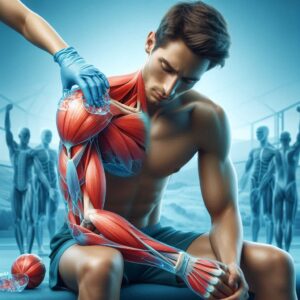 Exploring Non-Surgical Treatment Options for Effective Relief from Shoulder Tendonitis
Exploring Non-Surgical Treatment Options for Effective Relief from Shoulder Tendonitis
Healthcare professionals frequently recommend non-surgical treatment options as the first line of defense against shoulder tendonitis. One highly effective approach entails a combination of rest and modifications to daily activities. By minimizing or avoiding actions that exacerbate symptoms, individuals grant their inflamed tendons the crucial time needed for healing. In addition to rest, applying ice to the affected area can significantly reduce swelling and alleviate pain, which is particularly important during the early stages of recovery.
Over-the-counter anti-inflammatory medications can also be beneficial in managing discomfort during this initial phase. Furthermore, engaging in physical therapy plays a pivotal role in the non-surgical treatment landscape. A skilled physical therapist can create a tailored rehabilitation program focused on strengthening the muscles surrounding the shoulder joint while improving flexibility and range of motion. Through targeted exercises and stretching routines, individuals can progressively restore strength and functionality in their shoulders. Additional therapeutic modalities, such as ultrasound therapy or electrical stimulation, may also be utilized to support healing and reduce pain. By exploring these non-surgical options, individuals can actively engage in their recovery while minimizing the need for more invasive treatments.
Examining Surgical Alternatives for Chronic Shoulder Tendonitis: Important Considerations
If non-surgical treatments do not yield relief after several months, or if significant damage to the shoulder structures is present, surgical interventions may become necessary. One commonly performed procedure for addressing shoulder tendonitis is arthroscopy. This minimally invasive technique allows surgeons to visualize and repair damaged tissues within the joint using small incisions and specialized instruments. During an arthroscopic procedure, any inflamed tissue or bone spurs contributing to the patient’s symptoms can be removed, promoting healing and restoring shoulder function.
In some cases, open surgery may be indicated for more extensive repairs or when additional conditions coexist with shoulder tendonitis. This approach requires larger incisions to grant greater access to the shoulder joint for a thorough evaluation and treatment. While surgical procedures can effectively resolve persistent shoulder tendonitis, it is crucial to carefully consider the potential risks and benefits in consultation with a healthcare provider. Additionally, post-operative rehabilitation is vital for recovery, allowing individuals to regain strength and mobility in their shoulders.
 Proactive Measures for Preventing Shoulder Tendonitis and Enhancing Joint Health
Proactive Measures for Preventing Shoulder Tendonitis and Enhancing Joint Health
Preventing shoulder tendonitis is crucial for maintaining optimal shoulder health and avoiding the associated pain of this condition. One highly effective strategy is to engage in regular strength training exercises that specifically target the muscles surrounding the shoulder joint. By increasing strength in these muscles, individuals can provide enhanced support for their shoulders during various physical activities, thereby minimizing the risk of injury.
Moreover, employing proper body mechanics during lifting or overhead movements is essential to reduce strain on the shoulder area. Being aware of one’s physical limits and recognizing when rest is needed can also aid in preventing chronic issues like tendonitis from developing. Ignoring pain signals or overtraining can lead to long-term complications. Additionally, integrating flexibility exercises into a regular fitness regimen can help maintain an optimal range of motion in the shoulders. Stretching before and after physical activities is beneficial in preventing tightness and lowering injury risk. By implementing these proactive preventive measures, individuals can significantly decrease their chances of developing shoulder tendonitis.
Dedication to Recovery and Rehabilitation: Your Path to Overcoming Shoulder Tendonitis
Successfully recovering from shoulder tendonitis requires a strong commitment to a structured rehabilitation program focused on restoring function and alleviating pain. Initially, recovery efforts will emphasize reducing inflammation through rest and ice application, gradually incorporating gentle range-of-motion exercises under professional guidance. As healing progresses, strengthening exercises become increasingly essential for rebuilding muscular support around the shoulder joint.
Throughout the rehabilitation process, it’s vital to remain attentive to the body’s signals and to resist the urge to push too hard too soon. Regular follow-up appointments with healthcare professionals are necessary to monitor progress and adjust the rehabilitation plan as needed. With dedication and adherence to a well-structured recovery program, individuals can expect to regain full functionality in their shoulders while minimizing the risk of future injuries related to tendonitis.
For those seeking further insights into effectively managing shoulder tendonitis, MCR Therapies provides a variety of services that may be especially beneficial. Their treatments focus on alleviating symptoms associated with this condition. Notably, their cupping therapy service is highly regarded for its efficacy in promoting pain relief and muscle healing, making it an excellent option for individuals dealing with shoulder tendonitis.
Provided By: Shoulder Therapy
The Article: Shoulder Tendonitis Causes and Effective Treatments appeared first on https://mcrtherapies.co.uk
The Article Shoulder Tendonitis: Causes and Top Treatment Options appeared first on https://mcrtherapies.com
The Article Shoulder Tendonitis Treatment: Key Causes and Solutions Was Found On https://limitsofstrategy.com

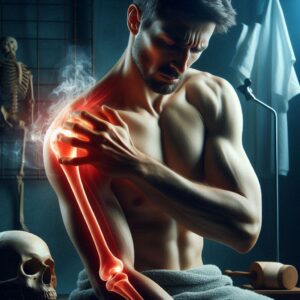 Identifying Symptoms and Effective Diagnostic Approaches for Frozen Shoulder
Identifying Symptoms and Effective Diagnostic Approaches for Frozen Shoulder Highlighting the Importance of Physical Therapy and Exercises in Frozen Shoulder Recovery
Highlighting the Importance of Physical Therapy and Exercises in Frozen Shoulder Recovery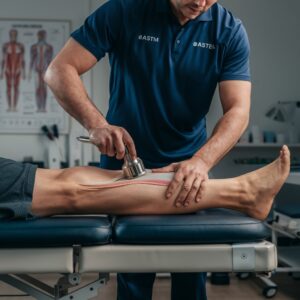
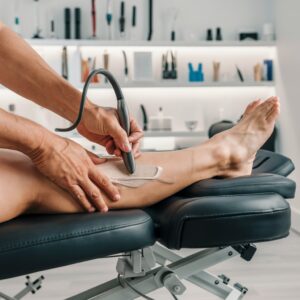 The Role of IASTM in Rehabilitation and Injury Prevention
The Role of IASTM in Rehabilitation and Injury Prevention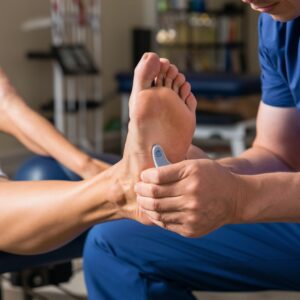 Integrating IASTM into a Comprehensive Recovery Plan
Integrating IASTM into a Comprehensive Recovery Plan
 Benefits of the Fascial Distortion Model
Benefits of the Fascial Distortion Model Finding a Qualified Practitioner for Fascial Distortion Model Treatment
Finding a Qualified Practitioner for Fascial Distortion Model Treatment
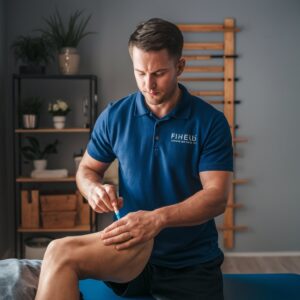 Combining Dry Needling with Joint Mobilization: Addressing Musculoskeletal Pain
Combining Dry Needling with Joint Mobilization: Addressing Musculoskeletal Pain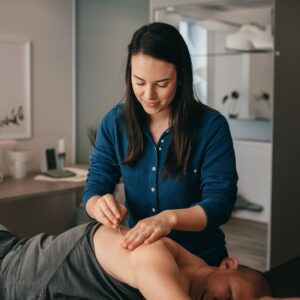 Patient Education and Safety: Exploring the Benefits and Risks of Dry Needling in Manual Therapy
Patient Education and Safety: Exploring the Benefits and Risks of Dry Needling in Manual Therapy